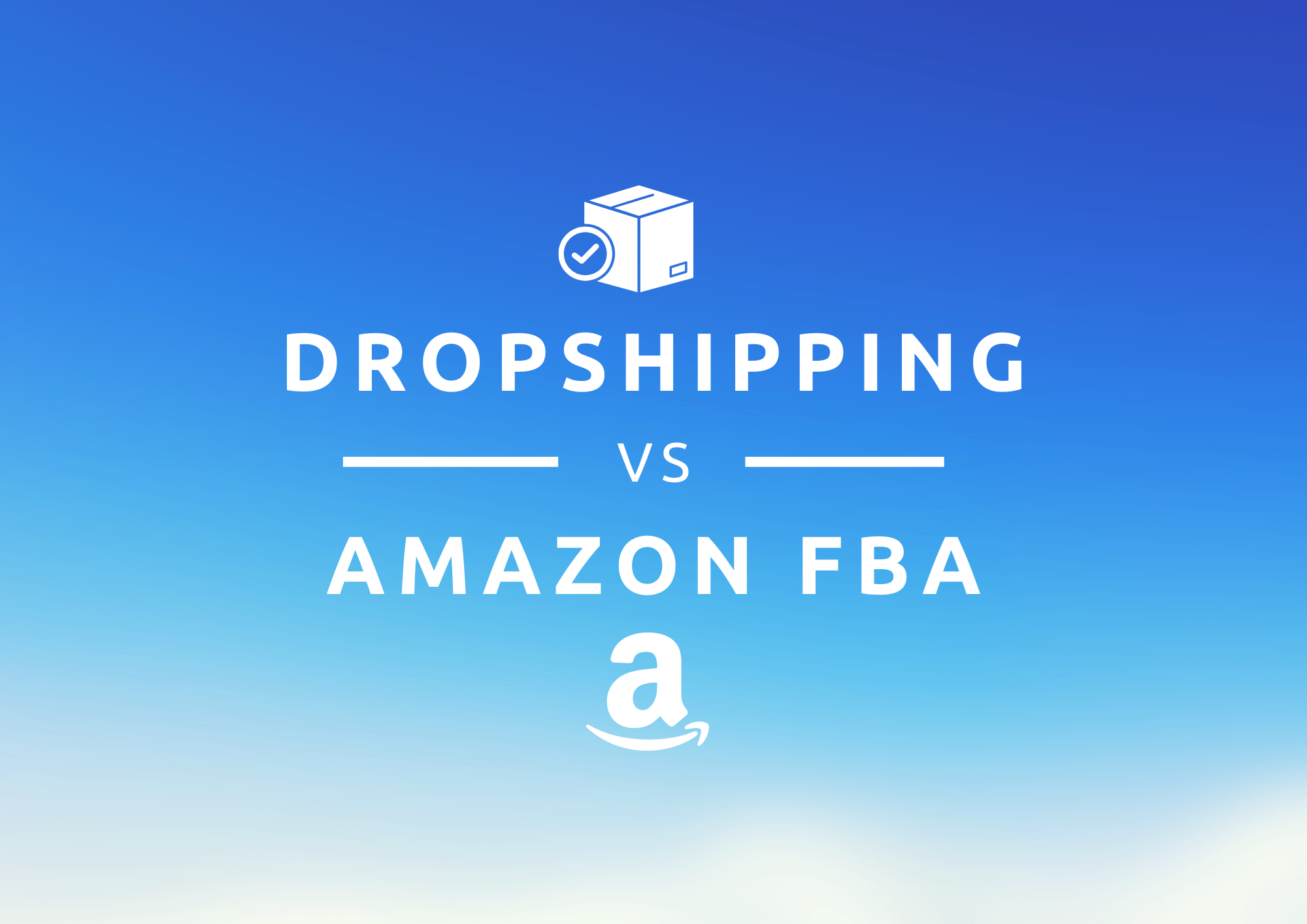Starting an e-commerce business can be a great way to turn your passion for retail into a profitable venture. But with so many options available, it can be tough to know where to begin. Two popular models for selling products online are Dropshipping and Amazon FBA. While both offer the opportunity to sell products without stocking inventory, they approach fulfilment in very different ways.
In this blog, we’ll take a closer look at the pros and cons of Dropshipping vs Amazon FBA, to help you determine which model is the best fit for your e-commerce business. Whether you’re a seasoned entrepreneur or just starting out, this guide will provide valuable insights into the world of online retail.
Let’s first start with the basics.
What is dropshipping?
Dropshipping is a business model where you do not keep goods in stock, but instead transfer customer orders and shipment details to either the manufacturer, another retailer, or a wholesaler, who then ships the goods directly to the customer. This allows you to make a profit on the difference between the wholesale and retail prices.
In simpler terms, dropshipping is a way to sell products without actually having to hold any inventory. All you need to do is promote and sell the product to the customer and then when an order is placed, you forward the order to the supplier, who ships the product directly to the customer. The retailer never physically handles the product, but still earns a profit on the sale.
What is Amazon FBA?
Amazon FBA is a service offered by Amazon that allows you as a seller to store your products in Amazon’s fulfilment centres. This means that when a customer places an order for a product, Amazon takes care of all the shipping, handling, and customer service responsibilities on your behalf.
Think of it this way: instead of having to manage your own storage, shipping, and customer service, you can use Amazon FBA to do it for you. All you need to do is send your products to Amazon’s fulfilment centres, and Amazon will take care of the rest.

What’s the difference between Dropshipping and Amazon FBA?
The main difference between dropshipping and Amazon FBA is who handles the fulfilment of orders. In dropshipping, the retailer partners with a supplier or manufacturer who stores and ships products directly to the retailer’s customers. The retailer does not handle the product themselves.
In Amazon FBA, the seller stores their products in Amazon’s fulfilment centres, and Amazon handles all the shipping, handling, and customer service responsibilities for the seller. The seller does not handle the product themselves.
So, in dropshipping, the supplier/manufacturer handles the fulfilment, while in Amazon FBA Amazon handles the fulfilment. Both methods have their own advantages and disadvantages and that takes us to the next point.
Is Dropshipping better than Amazon FBA?
The differences between dropshipping and Amazon FBA means that they tend to have different benefits to each other, and tend to suit different people depending on the type of risk and the amount money you have to start each e-commerce venture.
Benefits of Dropshipping
- Lower start-up costs: Since you don’t have to purchase inventory upfront, dropshipping is a relatively low-cost way to start an online retail business.
- Wide range of products: You can offer a wider range of products than you could if you had to purchase inventory for all of them.
- Flexibility: Since you don’t have to manage inventory, you have more flexibility to change your product offerings or switch suppliers as needed.
Downsides of Dropshipping
- Longer shipping times: Since the product is coming directly from the supplier, shipping times can be longer than if you were managing the inventory and shipping yourself.
- Limited control over the product and shipping process: Since the product is coming directly from the supplier, you may have limited control over the quality of the product and the shipping process.
- Increased competition: Since drop shipping is a relatively low-barrier-to-entry business model, there may be a lot of competition in your market.
Here are the main Pros and Cons of Amazon FBA:
Benefits of Amazon FBA
- Convenience: You can save time and effort by letting Amazon handle the shipping, handling, and customer service responsibilities.
- Increased credibility: Because Amazon is a well-known and trusted brand, using Amazon FBA can help increase your credibility and sales.
- Access to Amazon’s logistics network: By using Amazon’s fulfilment centres, you can take advantage of Amazon’s extensive logistics network and get your products to customers faster.
Downsides of Amazon FBA
- Fees: There are fees for storage, handling, and shipping, which can add up and eat into your profits.
- Loss of control: By letting Amazon handle the fulfilment, you may have less control over the customer experience and may be at the mercy of Amazon’s policies and procedures.
- Dependence on Amazon: If Amazon changes its policies or fees, or if your account is suspended, it can have a major impact on your business.
How to choose between Dropshipping vs Amazon FBA
When choosing between dropshipping and Amazon FBA, there are several factors to consider:
- Start-up costs: If you have limited resources, drop shipping may be a more attractive option because of its lower start-up costs.
- Product offerings: If you want to offer a wide range of products, dropshipping may be a better choice, as it allows you to offer a variety of products without having to purchase inventory upfront.
- Control: If you want more control over the product and shipping process, drop shipping may be the better option. With Amazon FBA, you are relying on Amazon’s policies and procedures, so you have less control over the customer experience.
- Shipping times: If fast shipping is important to your customers, Amazon FBA may be the better choice, as it can get your products to customers faster through its logistics network.
- Credibility: If you want to increase your credibility, Amazon FBA may be the better choice, as the Amazon brand is well-known and trusted by customers.
- Time and effort: If you want to save time and effort, Amazon FBA may be the better choice, as it takes care of shipping, handling, and customer service for you.
- Dependence on Amazon: If you are concerned about being dependent on Amazon, drop shipping may be the better choice, as it does not involve using Amazon’s fulfilment network.
In conclusion, both drop shipping and Amazon FBA have their own advantages and disadvantages. The best option for your business will depend on your goals, resources, and market. It’s important to carefully evaluate the pros and cons of each method, such as start-up costs, product offerings, control, shipping times, credibility, time and effort, and dependence on Amazon, before making a decision.
Start your dropshipping journey with Ecom Pilot!



